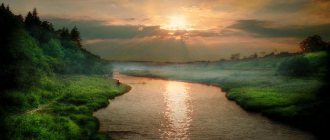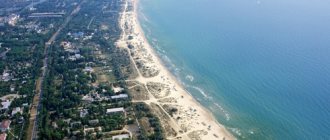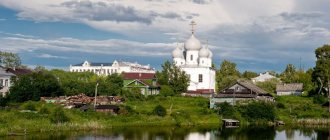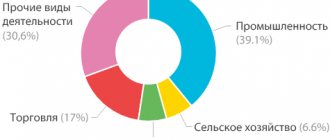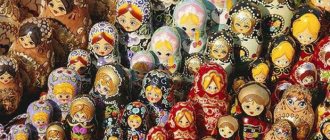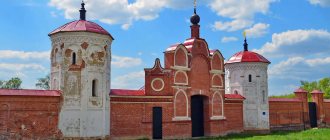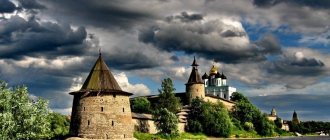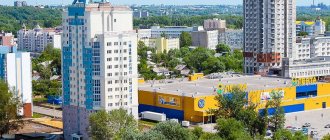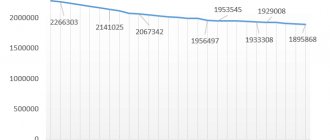If we consider the Central Federal District, then in its southwestern part you can see a small area dissected by a large number of rivers. This is the Kaluga region. According to scientists, settlements existed on this land for several thousand years BC. On the satellite map of the Kaluga region, borders with several regions are visible:
- Tula;
- Bryansk;
- Orlovskaya;
- Moscow;
- Smolenskaya.
The regional center of the region is the city of Kaluga, located only 140 km from the Moscow Ring Road. The region has a developed infrastructure, the objects of which can be studied using a map of the Kaluga region by district. This convenient online service allows you to find any cities and towns, examine their structure, main and small streets, houses, administrative and natural objects.
The entire water system of the region belongs to the Oka basin. More than 2,000 rivers, rivulets and streams flow through the region. About 300 of them are longer than 10 km.
The main rivers that can be found on the map of the Kaluga region with diagrams:
- Protva;
- Ugra;
- Bolva;
- Ressa;
- Zhizdra;
- Oka.
There are about 500 peat bogs on the territory of the Kaluga region. The largest number of them is located in the western and northwestern parts of the region, through which the Ugra River and its tributaries flow.
What holiday is it today?
January 22, 2022, Saturday
Today are holidays, events: Day of Unification of Ukraine Tomorrow: Premiere of the opera “Eugene Onegin” at the Bolshoi Theater
Today is the Orthodox holiday: Martyr Polyeuctus. St. Philip, Metropolitan of Moscow and All Russia, wonderworker... Tomorrow: St. Gregory, Bishop of Nyssa. Venerable Markian the presbyter. Venerable Dometian, Bishop of Melitino. St. Paul of Komel, wonderworker, student of St. Sergius of Radonezh. Saint Theophan, the Recluse of Vyshensky...
Today is a national holiday: St. Philip's Day... Tomorrow: Gregory - Summer Guide...
Seasons
Seasons, four periods of the year (spring, summer, autumn and winter) characterized by certain average temperatures. The period during which the Sun passes through one of these sectors is called the season. Spring in the Northern Hemisphere and autumn in the Southern Hemisphere begin when the Sun passes through the initial circle of declination and its right ascension is 0° (vernal equinox). Summer in the Northern Hemisphere and winter in the Southern Hemisphere occur when the sun's right ascension is 90° (summer solstice). Autumn in the Northern Hemisphere and spring in the Southern Hemisphere begin when the sun's right ascension is 180° (autumnal equinox). The beginning of winter in the Northern Hemisphere and summer in the Southern Hemisphere is considered to be the winter solstice, when the direct ascension of the Sun is 270°... Next: Seasons. Russian folk calendar. Monthly words...
Enterprises
In Soviet times, Kaluga was a large machine-building center, specializing in the production of machinery and equipment. Currently, the industrial potential has been preserved and is being revived thanks to investments, including foreign ones. Technoparks “Grabtsevo”, “Rosva” and “Kaluga-Yug” have been created within the city and its suburbs.
The automotive cluster is actively developing in these industrial zones (Volkswagen, Skoda, Volvo, Mitsubishi, Renault, Peugeot and Citroën cars are assembled).
Industrial structure of Kaluga:
- mechanical engineering – 46%;
- food industry – 35%;
- energy – 13% (Kaluga Thermal Power Plant);
- light industry – 1.5%.
In this regard, Kaluga has recently been called nothing less than “Russian Detroit”.
Folk calendar about every day
Every day one season always replaces another and this determines a person’s way of life. In connection with this, a folk calendar was formed in which there were practically no nameless, unmarked days. Every day was special, had its own purpose. All this was determined by climate conditions and astrological phenomena.
A calendar is a system for counting periods of time. The first calendars arose a long time ago, in ancient times, because there was a need to measure time. The word calendar comes from the Latin words caleo - to proclaim and calendarium - debt book. This is due to the fact that in Ancient Rome the beginning of each month was especially proclaimed, and because it was customary to pay debts on the first day of the month. Different peoples counted time differently. Some calendars are based on the changing phases of the moon - lunar calendars; in others - the change of seasons - sunny; in others, the length of the year was coordinated with the change of seasons, and the counting of months was associated with the phases of the Moon. Such calendars are called lunisolar.
In Rus', the calendar was called a monthly calendar. Every day, the month book covered the entire year of peasant life, “describing” day by day, month after month, where each day had its own holidays or weekdays, customs and superstitions, traditions and rituals, natural signs and phenomena. The cyclical nature of the calendar is reminiscent of human life, where spring is youth, summer is heyday, autumn is the time of harvesting fruits (it’s good if there are some, otherwise you can live your life without collecting fruits), winter is the time of wisdom and peace. This cyclicality and rhythm determined the way of life of the farmer. The folk calendar was an agricultural calendar, which was reflected in the names of the months, folk signs, rituals and customs. Even the determination of the timing and duration of the seasons is associated with real climatic conditions. Hence the discrepancy between the names of the months in different areas... Next: Folk calendar...
Investments
Kaluga and the Kaluga region, thanks to their scientific and industrial potential, favorable geographical location and adopted legislation aimed at the development of high-tech sectors of the national economy and the formation of 10 technology parks and the special economic zone "Ludvino", are distinguished by a high degree of investment attractiveness and a favorable investment climate.
In terms of investment in fixed capital, the region confidently ranks first in the Central Federal District, in terms of foreign direct investment it ranks second in the Central Federal District and third among all regions of the Russian Federation.
Fishing calendar for every day
The fishing calendar should not be taken as an absolutely indisputable truth. Fish biting is greatly influenced by a whole range of natural factors, as well as the influence on the nature of man himself. You must not forget that the fish’s bite depends and is determined not only by the calendar dates and biological cycles of their life, reflected in the calendar, but also, no less, by the state of their habitat; the bite also depends on weather conditions: air and water temperatures, cloudiness, wind direction and strength, etc... Next: Fishing calendar...
Small towns up to 20 thousand people
Kozelsk
Population 16,045 people (2016).
Kondrovo
Population 15,146 people (2016).
Sukhinichi
Population 15,144 people (2016).
Zhukov
There are other meanings of this name
Population 12,844 people (2016).
Borovsk
Population 11,210 people (2016).
Sosensky
Population 11,008 people (2016).
Kremenki
Population 10,774 people (2016).
Ermolino
Population 10,263 people (2016).
Tarusa
Population 9,267 people (2016).
Belousovo
Population 8,914 people (2016).
Medyn
Population 7,849 people (2016).
Yukhnov
Population 6,153 people (2016).
Zhizdra
Population 5,506 people (2016).
Spas-Demensk
Population 4,342 people (2016).
Mosalsk
Population 4,084 people (2016).
Meshchovsk
Population 4,036 people (2016).
Orthodox calendar about every day
Orthodox calendar: Orthodox, Church and Christian holidays.
The church year is an alternation of weekdays and holidays. On weekdays, a person is called to work “by the sweat of his brow to earn his bread.” Holidays are given in order to feel liberation, to rise above the bustle and routine of the world, to feel involved in the highest of worlds, “where there are no illnesses, sorrows and sighs, but endless life.” Since ancient times, holiday cycles have been associated with the seasons. The pagans associated them with the worship of the forces of nature, the cult of which in the Old Testament was replaced by gratitude to the Creator for the universe. And although the connection between holidays and the seasons has not completely lost its power, since God is present in everything, in the plant and animal world, in human works, it nevertheless faded into the background, giving way to a spiritual foundation built on the Sacred Scriptures. The history of Orthodox holidays dates back to the times of the Old Testament. Each of the Orthodox holidays is dedicated to the remembrance of the most important events in the life of Jesus Christ and the Mother of God, as well as the memory of saints... Next: Orthodox calendar...
The fascinating nature of the Kaluga region
Kaluga region, a region with fascinating nature, village.
including truly fabulous forests, huge in the area covered. The region is rich in ancient, centuries-old plants, has a rich wildlife and many natural monuments. The Kaluga region is geographically located in the middle of the East European Plain. The change of times here is very obvious and bright. It can be enjoyed to the fullest.
The region also has a large amount of mineral resources, such as brown coal or, for example, limestone.
Russian folk calendar for every day
The word “sign” comes from the word “notice”, i.e. observe. As a result of observing what happens around a person every day, he accumulates life experience. This knowledge was passed down from generation to generation, carefully preserved and people trusted it as a sacred book. Many signs have come to us from the depths of centuries without losing their knowledge. Each of us is free to choose: to dismiss all this as an absurd superstition or to take a closer look at the signs and take the centuries-old experience of generations more seriously. Most of us, when taking exams, ask them to scold them, boasting about some kind of good fortune or luck, spit so as not to jinx them or knock on wood, take a detour if a black cat crossed the road, are afraid of the number 13 and much more. And who among us does not have lucky things, numbers? Who has never resorted to the help of fate at least once in their life, who has not believed in secrets? It’s as if everything connected with signs is hidden somewhere deep in our subconscious. Often we remember them mechanically, unconsciously, or just as a joke. But, undoubtedly, the signs contain a lot of accurate knowledge and practical wisdom of our ancestors. They cover all the characteristic, often difficult to perceive, natural phenomena. Signs have preserved a lot of what was in old folk holidays and customs; they help predict the weather, grow crops... Next: Folk signs...
Minerals
The bulk of all fossils in the region are related to sedimentary rocks (for example, brown coal, limestone or construction sands).
In total, about five hundred deposits exist and are being developed in the region. 36% of the mineral reserves of the Kaluga region are brown coal, about 60% are glass sands. The Kaluga region, among other regions of central Russia, occupies one of the leading positions in terms of the number of deposits.
The main groups of fossils include: organic minerals (for example, peat or brown coal), ceramic or metallurgical minerals (refractory clays), mining minerals (molding sands), argonomic minerals (phosphorites), and mining chemicals (stone salt) and others.
Holiday calendar, dates and events of the year
All state and professional holidays in Russia, including significant World and International holidays, and other equally interesting holidays and events about every day.
The holiday has always kept pace with the history of mankind. Social time can be divided into three types: everyday life (weekdays), weekends and holidays. Everyday life is a series of practices repeated day after day and every day (work). Weekends are regular breaks from the rush of everyday life. It is believed that on weekends a person should restore his strength after working days. Day off, non-working day. A holiday is a day of celebration established in honor or in memory of someone or something. A day or series of days celebrated by the church in memory of a religious event or saint... Next: Calendar...
Fauna of the Kaluga region.
The fauna does not lag behind the plant world in diversity. It is believed that three main types of animals live in this area: steppe, Western European and northern.
Common representatives of the local fauna are bears, wolves, foxes, marmots, hares and hamsters. You can easily meet an elk or a wild boar. There are also more than 260 species of birds.
Amphibians consist of 11 species, including frogs, toads and newts.
The main of the 7 species of reptiles represented in the region are snakes, vipers and some lizards.
The large number of reservoirs of Kaluga land contributes to the presence of many varieties of fish in the region. The most popular and common are perch, roach, bream and pike. The river farms of the region are engaged in breeding and catching fish.
In short, it is not for nothing that the fauna of the region attracts close attention. Many tourists recognize its value and are inclined to study it thoroughly. The region also attracts the attention of serious scientific researchers along with wildlife lovers.
There are also nature reserves in the region. one of the most significant is an establishment called “Kaluga Zaseki”. focused on protecting the natural resources of the region. The Tarusa nature reserve and the Ugra park are also famous, recognized as local treasures. By the way, in the Kaluga region they treat nature very carefully. There are many environmental institutions and facilities in the region.
Prayer book, Orthodox prayers for every day
Prayer is the most powerful means for healing all illnesses - both physical and mental. Prayers can be laudatory or grateful, petitionary and repentant. If we have offended God, sinned, we must ask Him for forgiveness, that is, repent. Such prayers are called repentant prayers. If everything is fine with us, if we and our loved ones are healthy and prosperous, if we have a place to live, something to wear, something to eat, we must glorify and thank God for this. Such prayers are called praise or thanksgiving. If some misfortune, illness, trouble or need happens, you need to ask God for help. Such prayers are called petitionary... Next: Orthodox prayers...
Zodiac, astrological, eastern calendar. Zodiac signs
In ancient times, to establish the calendar, priests used knowledge of the positions of all the planets. Before the reform of Peter 1, the New Year was celebrated on the Day of the Autumn Equinox. On this day, according to ancient legend, the most peaceful treaty was concluded between the Great Race (ancient Slavs) and the Great Dragon (ancient Chinese) and it was approximately 7518 years ago... For the ancient Slavs, the calendar month corresponded to the lunar cycle from new moon to new moon, taking into account such Thus, the relationship of the entire annual cycle with astronomical and natural phenomena. There was no coherent calendar system. The main natural phenomena are still considered to this day to be the days of the solar equinox and solstice - the Slavic holidays Maslenitsa, Kupala, Ovsen and Kolyada. But during the time of Peter 1, all ancient Slavic calendars were abolished and a new Western European calendar from the Nativity of Christ (Julian calendar) was introduced, while the beginning of the calendar was moved to January 1. The Julian calendar (old style) did not take leap days into account and accumulated one extra day every 128 years. After the October Revolution in 1918, the Gregorian calendar (new style) was introduced in Russia, according to which an amendment of 13 days was introduced. The calendar of the ancient Slavs was based on two planets: the Sun and the Moon. And now they don’t use anything at all. The calendar has become static. There is no such thing as the calendar, it turns out, resting on some planet. Nobody even knows about it. There are just some standard numbers, there are months and holidays. The calendar is based on the Sun and Moon. Why is this so? Because these two luminaries influence the Earth. The Earth revolves around the Sun, and the Moon revolves around the Earth. And these two luminaries create the atmosphere on the planet. From here the calendar is built... Next: Astrological calendar...
Dream books online, interpretation of dreams
A dream book is nothing more than an interpreter of dreams and dreams, a translator of dreams. Since ancient times, people have been using dream books; dreams have always been given great importance, and people have often noticed the prophetic properties of some dreams. The dream book can become your faithful assistant every day and throughout your life, thanks to the dream interpreter you can always make the right decisions, the dream book will help you resist temptations in time, and will warn you against wrong steps and frivolous actions. Further…
Flora of the Kaluga region.
As mentioned above, most of the territory is covered with forests. The Kaluga region is rich in coniferous, broad-leaved and even relict forests.
The largest areas are covered with mixed coniferous-deciduous plantations, and broad-leaved forests grow in the center and east of the region.
Today, the qualitative composition of forests is changing. Increasingly, they take on a mixed appearance, with a predominance of aspens and birches.
Horsetails, ferns, mosses, and lichens are also common in the region.
The Kaluga region has a hugely diverse flora. Among the most common species are water chestnut, wild garlic, orchid species and many other plants. Among the trees you can most often see alder, birch, oak, rowan, linden, maple and even a wild apple tree. Shrubs are also widely represented. You can often see willow, currants, juniper and others. Among such a variety of plants, it is quite natural that an unimaginably large number of mushrooms grow.
Vascular plants are very widespread in the region. There are about 1120 varieties.
There is a lot of algae in the region that grow in local reservoirs.
